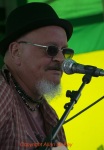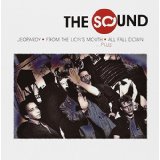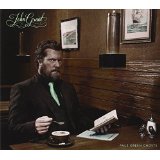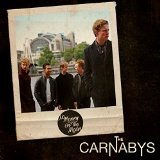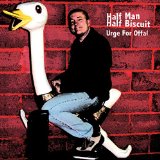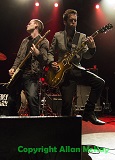 So, on to the second part of our mid-term report, and it kicks off with a band that the Riot Squad saw live a couple of times last year. Federal Charm released their debut album in 2013 and have been on the circuit trying to reach as many people as possible with their melodic blues/rock. This year they’ve also been recording their second album which is ready for release in the Autumn to coincide with a major support tour with Joanne Shaw Taylor in September and October. We’re looking forward to reviewing the new album and the live shows will definitely be worth seeing.
So, on to the second part of our mid-term report, and it kicks off with a band that the Riot Squad saw live a couple of times last year. Federal Charm released their debut album in 2013 and have been on the circuit trying to reach as many people as possible with their melodic blues/rock. This year they’ve also been recording their second album which is ready for release in the Autumn to coincide with a major support tour with Joanne Shaw Taylor in September and October. We’re looking forward to reviewing the new album and the live shows will definitely be worth seeing.
Phil Burdett’s album “Dunfearing and the West Country High” (again from Drumfire Records) was another MusicRiot favourite last year. It was the first part of Phil’s “Secular Mystic” trilogy, and a work of rare beauty. The second part of the trilogy, “Shaky Path to Arcadia”, is due to be released in late summer/autumn 2015 and based on the songs that the Riot Squad have heard so far at a couple of gigs in Southend and Leigh-on-Sea, this is shaping up to be another classic. There’s also the first part of an acoustic trilogy which may be released later this year, but we’ll tell you more about that later.
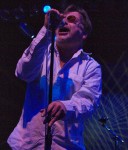 Did we feature anyone from New Jersey? We did? Now that’s a surprise. Southside Johnny and the Asbury Jukes have a new album which should be released later this year and that’s always something we look forward to here at Riot Towers. The album’s called “Soultime!” and the band has been previewing some of the songs at shows over the summer in the States; apparently they’re sounding pretty good. The one snippet we’ve heard from the live shows, “Spinning”, sounds like The Jukes at their very best with the band cooking on gas and the horns blowing up an absolute storm.
Did we feature anyone from New Jersey? We did? Now that’s a surprise. Southside Johnny and the Asbury Jukes have a new album which should be released later this year and that’s always something we look forward to here at Riot Towers. The album’s called “Soultime!” and the band has been previewing some of the songs at shows over the summer in the States; apparently they’re sounding pretty good. The one snippet we’ve heard from the live shows, “Spinning”, sounds like The Jukes at their very best with the band cooking on gas and the horns blowing up an absolute storm.
 Bob Malone’s also from New Jersey, although he lives in California these days. We reviewed the “Mojo EP”, which was a sampler for his “Mojo Deluxe” album, last year. After a year of touring the States with John Fogerty and Europe with his own band, “Mojo Deluxe” is just about ready to go and he’ll be touring the UK later this year in support of the album. If the album lives up to the standards set by the EP, it should be a little bit special. As for the live shows, you really should get along to see one of those; we’ll give you some dates later in the year.
Bob Malone’s also from New Jersey, although he lives in California these days. We reviewed the “Mojo EP”, which was a sampler for his “Mojo Deluxe” album, last year. After a year of touring the States with John Fogerty and Europe with his own band, “Mojo Deluxe” is just about ready to go and he’ll be touring the UK later this year in support of the album. If the album lives up to the standards set by the EP, it should be a little bit special. As for the live shows, you really should get along to see one of those; we’ll give you some dates later in the year.
That’s it for the bands we featured in the predictions for 2015 and so far it’s looking pretty good for all of our selections. In the third and final part of the report, we’ll bring you up to speed with some of the great bands and artists we’ve seen for the first time this year who we think you’ll be hearing a lot more of.
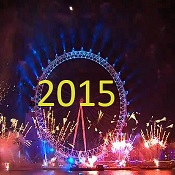 So that’s 2014 well and truly put to bed. We’ve had great fun telling you about an interesting and varied bunch of albums and gigs and we’ve even thrown in a few photos as well. I suppose you want to know what delicacies MusicRiot has lined up for you in 2015; well, we’re only five days in so far, but we’re starting to get an idea of some of the music we’re looking forward to this year. Just bear with me a second while I clean the fingerprints off this crystal ball; I knew it was a mistake going for the touch-screen version.
So that’s 2014 well and truly put to bed. We’ve had great fun telling you about an interesting and varied bunch of albums and gigs and we’ve even thrown in a few photos as well. I suppose you want to know what delicacies MusicRiot has lined up for you in 2015; well, we’re only five days in so far, but we’re starting to get an idea of some of the music we’re looking forward to this year. Just bear with me a second while I clean the fingerprints off this crystal ball; I knew it was a mistake going for the touch-screen version.
Okay, a couple of predictions to start with. Two very different bands that we love at Riot Towers, Stone Foundation and Federal Charm, are continuing their march towards world domination. Both bands are currently demoing new albums while taking every opportunity to play live as well. Stone Foundation, following the success of the album, “To Find the Spirit”, tours of the UK and Japan and heaps of radio play last year are taking their brand of small town soul to Europe this April with gigs in France, Germany and The Czech Republic. There’s a British tour as well, which will probably feature some of the material from the new album. Federal Charm, after a hectic year supporting the likes of Ian Hunter and Rich Robinson are focussing on studio life for a while but I guess we can look forward to hearing more from them live later in the year; they just seem to get better with every tour. Another of our old friends, Maura Kennedy, is working on a solo album this year as well, although we don’t know about release dates for that one yet. I suspect we also have a new Southside Johnny album this year as well.
As for albums which are definite releases for this year, we’re quite excited by a few of those as well. Our live favourites The Billy Walton Band have secured a deal for the release their album “Wish for What You Want” and that should be coming out in February. Drumfire Records have new releases in the spring from Dean Owens and Phil Burdett (who also has an acoustic album coming out this year. We reviewed Bob Malone’s “Mojo EP” as well as a gig last year and we’re really looking forward to the release of his “Mojo Deluxe” album, probably in April this year. And that’s before we even start on John’s picks for this year.
Keep an eye out here or like or Facebook page to keep up with all of our news this year.
Two of Allan’s High Five albums this year were released on Drumfire Records so it was a ridiculously obvious choice to ask the owner of the label (and live music promoter) Phil Penman to contribute to this feature. Once again, we got some really interesting choices.
When Allan ask me to contribute to High Fives, I thought that it would be easy – just pick five albums, I thought. But I wracked my brains and (not including Drumfire Records releases) I could not come up with a single 2014 album I thought was truly ‘great’. A dozen or so ‘good’ albums but nothing to change my life. Maybe I just haven’t found them yet. So what did excite me in 2014?
The Sound – “Box Set #1” (“Jeopardy”, “From the Lion’s Mouth” and “All Fall Down”). Privileged to work on this and truly delighted with the results, and even happier to be working on a second box set for Feb 2015 release. Adrian Borland is sadly missed. The music from this great band has really stood the test of time. Consistently high standard.
Not from 2014, but new to me. John Grant – 2 albums of enormous beauty that I’ve listened to more than any others: “The Queen of Denmark” and “Pale Green Ghosts”. It was hearing these that made me realise how much I crave music that is new to my ears and not just the latest in a succession from artists I already know and love.
Great to see local boys The Carnabys release their debut album “No Money on The Moon”. Great hard working lads, winners of Hard Rock Rising and an album that really exudes the energy and honesty they deliver live. These boys perform with smiles on their faces, which is so refreshing – not po-faced, earnest trying-too-hard-to-be-trendy. Not ground-breaking perhaps, but if you get a chance, see them live. With the right breaks they could be huge. Accessible rock.
Proving that quality can go on and on, the only time this year when one song had me running to the shop to buy the album. Half Man Half Biscuit’s “Westward Ho! –Massive Letdown” was that song. “Urge for Offal” is a good album, which also contains my lyric of the year: ‘‘Cresta! What the fuck were we drinking?!’
Ok, so I couldn’t not mention it. Drumfire released two albums in 2014 and both made Allan McKay’s High Five. We made our first ever piece of vinyl – Ags Connolly’s ‘How About Now’, we hosted great shows with Dean Owens, Martin Stephenson, and Clive Gregson…. but my favourite thing? Phil Burdett’s launch show in Westcliff. I’d only ever seen Phil perform solo. The launch show with full band made me fall in love with his music all over again. World, you don’t know what you are missing.
In parting, I’ll add that I’ve really tried to find new music, and the following half a dozen albums definitely deserve honourable mention (and barely a country album in sight): FKA Twigs, Future Islands, Sturgill Simpson, Royksopp, Strands Of Oak, Honeyblood.
So, here we go with the first of our guest contributions to this year’s High Fives. Phil Burdett is a singer-songwriter from Essex whose album “Dunfearing and the West Country High” was one of Allan’s top 5 albums for the year. He’s a very entertaining interviewee and he’s a great guy to have a beer (or several) with. Anyway, here are Phil’s favourite five musical events of 2014:
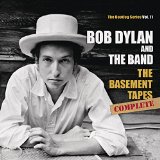 Release of Bob Dylan’s complete “Basement Tapes” Read more
Release of Bob Dylan’s complete “Basement Tapes” Read more
So, purely in alphabetical order (by album title) because there’s no way I’m trying to rank these in order of preference. They’re all very different and I can recommend any one of them to any real music fan; these are my five favourite albums of 2014.
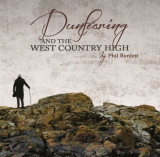 “Dunfearing and the West Country High” – Phil Burdett
“Dunfearing and the West Country High” – Phil Burdett
Phil Burdett’s latest album (on Drumfire Records) was a complete surprise for me. I’d heard Phil play a solo acoustic set a couple of years ago on a night out with the Riot Squad, but this was a completely different beast. “Dunfearing…” is the first part of the “Secular Mystic” trilogy, which should be completed with the release of parts two and three in 2015. It’s an album that sounds gorgeous; you could just sit and let its mix of folk, rock, country and a bit of jazz wash over you, but a little bit of extra effort and careful listening brings out all of the detail that Phil and the musicians have packed in to it; and there’s a lovely tribute to the late Jackie Leven. After reviewing the album, we also managed to grab an interview with Phil during the summer, which is a fascinating insight into a great songwriter.
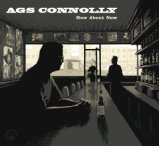 “How About Now” – Ags Connolly
“How About Now” – Ags Connolly
By sheer coincidence, also on Drumfire records, was the debut album from Ags Connolly, “How About Now”, which is now also available in a lovely limited edition vinyl pressing. Ags is based in Oxford but his roots are deep in the American South and his genre is a country offshoot known as Ameripolitan. He takes the outlaw attitude of artists like James Hand, Willie Nelson, Johnny Paycheck et al and gives it a personal twist with some very poignant songs. The album was produced in Edinburgh by his Drumfire labelmate, Dean Owens, and works well with full country band arrangements as well as the powerful solo acoustic guitar backing of the closing song “How About Now” (which was a genuine one-take recording).
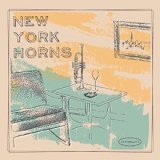 “New York Horns” – New York Horns
“New York Horns” – New York Horns
I know; you’re surprised that I’ve picked a jazz album. Truth is that I love to hear a good horn section, and most horn players away from the day job like to stretch themselves with a bit of jazz. The horns in question are John Isley (saxophone), Chris Anderson (trumpet) and Neal Pawley (trombone), better known as the horn section of The Asbury Jukes, aided and abetted by Jeff Kazee (keys) and Glenn Alexander (guitar). There isn’t a bad, or even a mediocre track on the album and with moods ranging from the blues of “Strollin’ with Sean” through the evocative, mellow “Morningside at Midnight” to the 24-carat soul of “Can’t Stand to See You Cry”, there’s something for everyone.
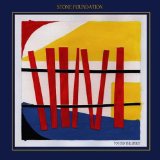 “To Find the Spirit” – Stone Foundation
“To Find the Spirit” – Stone Foundation
And continuing on the soul theme, how about some genuine home-grown English West Midlands soul? Stone Foundation has been steadily building up a devoted following for about ten years now, but “To Find the Spirit” may turn out to be the game-changer for them. The band takes influences from all over the soul spectrum to create a sound very much of this century but which appeals to very disparate groups of fans. The album grabbed me from the first few bars with the Hammond and horns intro of “To Find the Spirit” and impressed from start to finish. After 10 months (and seeing the band live three times), the standout song is definitely “Don’t Let the Rain”, driven along by Neil Sheasby’s slinky bass groove but, again, there’s no filler here.
 “Tone, Twang and Taste” – Pete Kennedy
“Tone, Twang and Taste” – Pete Kennedy
Now the reason this one’s here is that Pete Kennedy (one half of one of my favourite groups, The Kennedys) decided to pay tribute to the pioneers of the electric guitar prior to the rock ‘n’ roll era; the guys who had grab the interest by using technique and melodic invention rather than volume and a thudding 4/4 beat. Pete is a superb technical musician and “Tone, Twang and Taste” is so obviously a labour of love; every song is played with immaculate attention to detail and they all sound like they were great fun to do, particularly Pete’s ukulele version of “Rhapsody in Blue”. The commercial possibilities for this album were always very limited, and that’s one of the reasons I admire Pete so much for producing something that made me smile from start to finish.
You can read the original reviews of these albums on the site complete with all of the links to the songs on Spotify or Youtube; just type the title into the search box and you’re away. Go on, have a listen; they’re all great albums.
So it’s time to move on to the second half of the seventies and the early eighties and we start off with the P-word.
AM – How did you react when punk came along then?
PB – Loved it; I actually loved it and weirdly I wanted it to do what it wanted to do because up to that point my heroes were not punk at all and the very antithesis of punk. I wanted it, because I would have been about seventeen then, leaving school, and just starting to think about playing music in pubs and got a band together; well, actually, I got a duet together with Martin Gore (yes, that Martin Gore) and we were trying to write songs. He liked, I don’t know who he liked, I think it was Simon and Garfunkel at the time and he did like Sparks and David Bowie. I liked David Bowie but I wasn’t sure, I didn’t trust him which now, I think, was probably wrong, but I didn’t get the idea that superficial and chameleon-like was his theme. At the time I thought ‘I don’t believe he really means this’ and at that time it had to mean it and that meant a lot to me and I was probably wrong and Gore was probably way ahead of me on that. So we wrote songs which I tried to make melodic and soulful and he wanted to make strange and weird. I taught him how to play guitar and he was a better guitar player than he is, well, what he’s ended up as. We were writing some interesting songs at the time and we went out as this strange band and the punk happened, halfway through this band.
I had hair like Marc Bolan at the time and he had a bubble-cut but we found ourselves on these punk bills. I’d started writing a few songs as well, so I found myself as a solo person on these punk bills for no reason whatsoever because I had nothing to do with punk musically but I liked the fact you could play somewhere and there was energy there and I started listening to other people who were playing and I thought I’ll have a listen to this, so I went along to see some bands. I saw The Buzzcocks, The Ramones and The Talking Heads when they first came over, I saw The Clash once and there was a big fight so I didn’t hear much of The Clash, but that wasn’t the point in a way. I tended to like a what went on afterwards in the post-punk era; I got really well into that because there seemed to be room for bands like Television and The Fall with some of their lyrics which, at that point, were suddenly taking over for me and I went from trying to write songs like James Taylor with three words in them to two chords and “War and Peace” over the top of them; “Ulysses” or something like that, but then there were bands that that was feeding into at the time like The Fall. I certainly got heavily into The Fall and the more experimental bands but I would still listen to “The Modern Dance” by Pere Ubu and then go home and listen to “Mud Slide Slim and the Blue Horizon” by James Taylor because I think that’s what it’s about; they’re not dissimilar in the sense that the person who’s responsible for the music does what he wants it to do. There’s too many categories, in a way.
AM – I know Television, “Marquee Moon”, everybody claims now that it’s always been their favourite album and at the time…
PB – They’re fucking lying; I tried to get everyone into that and a couple of people got it, but for once the rabid NME press was right about this.
AM – For me it’s still one that I’m happy to get the vinyl copy out and stick it on the turntable.
PB – It is actually an album I can listen to at any time and that’s a rare thing. Sometimes, even your favourite albums you think ‘I’m not in the mood for that’, but I can be depressed, I can be happy, I can be whatever, but when Television comes on, that’s it.
AM – So, that was punk, what about what came after that.
PB – Punk was exciting and I was involved in the energy of it; everywhere you went there were gigs. I sounded like Leonard Cohen at that time but anything went and that was the beauty of it. I wore flares and had long hair at the punk gigs I did and it was, sort of, ok. You’d get comments, but that was sort of the point; wait until Dexys Midnight Runners sing about ‘you’re so anti-fashion, wear flares”. You could do anything you liked, it was sort of Dadaist spirit. It was very early on when the fashion thing kicked in, the Kings Road punks, and it was weird because I felt like I’d transcended that because I hadn’t changed. I didn’t even cut my hair so I was like David Crosby amongst the punks.
AM – So presumably when the synthesisers kicked in that wouldn’t really have been your thing.
PB – When the post-punk thing happened, I used to like some of the bands that became known as Krautrock, Can, Neu and the newer ones as well, Deutsch Amerikanische Freundschaft and Einsturzende Neubauten who were pure noise and distortion and the English versions of that like Cabaret Voltaire; I loved all of that. I thought there’s a synth thing going on and Martin got into it, so he buggered off and did Depeche Mode. Suddenly it turned into this really twee pop with no substance. I don’t hate pop music but I thought, with everything he knew, and the stuff he liked, I thought he would have gone towards Throbbing Gristle rather than this thing that happened, which seemed like it was going to be over in five minutes. For all I know he’s now a multi-millionaire and I’m sitting in a pub in Leigh.
AM – It’s a general thing that innovations like that come along, people make really good music and then somebody grabs bits of it for the mainstream and just dilutes it.
PB – That’s always happened. Bob Dylan wouldn’t have been anywhere if it wasn’t for The Byrds; fabulous as that was, I’d rather hear Dylan. I’m probably alone in the world in preferring “All Along the Watchtower” by Bob Dylan to the Hendrix version, even though I like Jimi Hendrix. I’m alone, even Bob Dylan said it’s a better version.
AM – Dylan’s songs have been interpreted by a lot of people; are they better versions or are they different versions?
PB – They’re different versions. Sometimes you can say they’re better versions but the thing I always try to get away from is ‘Dylan’s a fabulous songwriter and an icon of the twentieth century but he can’t sing’. So that means that if Judy Collins or some such does a version of “Idiot Wind”, it will be better, de facto, because she can sing. I could not disagree with anything, outside of UKIP, more vehemently than that. Bob Dylan and Sinatra are probably the best vocal stylists of this millennium. The reason I say that is because you try to play a Bob Dylan song and sing it and not sing a bit like Bob Dylan, not phrase it like him. The same with Sinatra, once you’ve heard “You Make me Feel So Young”, you try and sing that differently. Put your own slant on that; you can’t.
AM – I play and sing badly but I try Dylan songs like “I Shall be Released” and it’s always going to sound like Dylan.
PB – The Band did that; they’ve got some great singers in that band, and it sounded like Dylan; they couldn’t change the phrasing at all. You can sing it in a bland way or you can over-sing it; my worst nightmare is that I’ll wake up and “Positively Fourth Street” is covered by Mariah Carey. She would do it and you can guarantee you would have a queue of people saying ‘Oh, at last this song has been realised by a true singer’, but I would hunt her down and you’d see me on the Six O’Clock News if that happened.
Phil Burdett’s album, “Dunfearing and the West Country High” was reviewed here earlier this year and ever since that time I’ve been waiting for the chance to sit down and have a chat with Phil about his music (and many other things). We finally managed to meet up in Leigh-on-Sea on typically miserable British Bank Holiday weekend and had a pretty expansive chat over a couple of beers. Now that’s the way to do an interview. We covered a lot of ground, so the interview is being published in parts over the next few days.
AM – So Phil, tell us a bit about how you got to be where you are now, musically and philosophically.
PB – I take it you don’t mean the bus route down here. That’s a very good opening question and I’ll do my best to answer it. Musically I would say it’s incremental; it started off with my brother when I was five years old with a guitar and my brother Mick used to have a record collection and he’d lend me his older albums and he was one of those part-time hippies in the late sixties. He went to the Isle of Wight Festival, credit for that, and he had loads and loads of folk music and blues music which was all I heard. Everyone at school was into glam rock and everything so I used to have endless school parties when I was older (obviously not when I was five; great progressive school that would have been). All I would listen to was John Fahey, John Renbourn and probably a bit of the West Coast Neil Young, Topanga County kind of people, James Taylor and those sort of things. And I thought great, this is what’s in the charts, this pop music, then I got school and it was Marc Bolan which was fabulous; I didn’t quite reject everything of my brother’s but I thought, this is what I’m meant to be listening to so I suppose in the early times it was a mixture of Marc Bolan and John Renbourn and then my brother expanded as well into other things like The Band and Van Morrison. Actually, I saw Van Morrison first, although he will tell you different, but I saw him on the Old Grey Whistle Test when he did the “Too Late to Stop Now” thing and they broadcast the whole thing live when they used to do those things, in those days, and I just thought it was music from another planet; I’d never heard anything like it. He had a string section, he had a horn section, he was doing soul music, he was doing blues music, he was doing folky stuff and I can remember a shift happened in my head and I thought ‘this is what I want to do’, and that’s when I wanted to write songs. Not so much to write songs, ‘but I want to make this noise, not to play “Caravan” or “Brown-Eyed Girl”; I want to make this noise with these people. I want to have a bunch of people like this behind me and I want to make this noise.’
AM – Was it the variety of instruments that drew you to it?
PB – It was and, in retrospect, I was quite pleased with that because it was just such an astonishing surprise sometimes you go along to a gig, and you know two numbers in what you’re going to get, whether you like it or not. I like the idea that suddenly you don’t know what’s going to happen next; this could be a folk song, he could pull an acoustic guitar out, he could pull a set of bagpipes out. It could be anything; it could be heavy metal and I loved the idea of that and people like Captain Beefheart. Frank Zappa took it to extremes but I used to love Zappa and probably all the people I’ve liked since that, I’ve liked because of that gig where you thought that anything was possible. You see it now and it flows and it seems like a very good and expansive band playing but at the time I thought that one minute it was classical music, the next minute it was folk music and that’s what I liked it was the variation that made it a whole; it hung together because of the variation. It was astonishing; I sat up after it and I just didn’t know what to do. I wanted to everything but couldn’t do anything.
AM – You mentioned a couple of the musical mavericks there; is there something in you that taps in to that?
PB – I think it all came from that Van Morrison show. Now, I slag off Van Morrison more than anyone does because I think he’s become an appalling thing, an appalling great lump of Irishman. I would rather go and see, and I don’t say this lightly, I would rather go and see a Van Morrison tribute band now than see Van Morrison because it’s the same thing essentially; I think he’s lost the plot or never had the plot and got lucky. His first four or five albums up to “Veedon Fleece” and a little bit beyond were fantastic but suddenly it all went very wrong. When he was inventive and varied, which was probably before I got in to the idea of lyrics, and that’s evolved more than the music side, he was just purely making music and making sounds for the joy of it; I think Van Morrison expresses that if I don’t care about lyrics, because he’s not the greatest lyricist in the world, it’s perfect. “Astral Weeks”, it’s errant nonsense a lot of it but you couldn’t change a word of it. What the fuck is “Veedon Fleece”? What is a Veedon Fleece? But you wouldn’t want it any other way. I’m not religious, I’m an atheist, but I believe that; I want to go and search for the Veedon Fleece when I’m hearing that, so it works. It was that combination of trust in him, you believed in what he did, and his voice, which was peerless at that time. I used to try to do the Van Morrison bit with a bit of Bob Dylan thrown in. My brother tried to get me into Bob Dylan more and I said that Van Morrison was the man, and then suddenly the thing that changed it was Bob Dylan and Robbie Robertson. I heard The Band’s first album and, for no reason whatsoever, I just loved and then I realised that the reason I loved it was because of these words. It’s not the way they were being sung, although that was fabulous, it was these words and I didn’t know what they meant, but they sounded like they meant something and it was probably a combination of those things; Dylan, the Band and Van Morrison.
AM – I was going to come to this a bit later, but the first time I listened to “Dunfearing and the West Country High” I pulled the lyric booklet out and it was obvious that there were an awful lot of lyrics there.
PB – I get hell from record companies for that, especially from the people that type the lyrics out.
AM – But it was doing that and actually reading the lyrics that I realised you’re obviously a writer who is influenced by poetry as well.
PB – In a way, poetry came before lyrics because I used to like poetry before music. When I first heard music, the lyrics were part of the music, of the sound. They could have been singing anything and in some cases they were. People talk about Nick Drake, but I think Nick Drake’s a terrible lyricist. I’ll get crucified for this, but if his music and his sound wasn’t as good as it is, if musically he was someone like Donovan, then the lyrics aren’t that different; it becomes mystical because of the setting rather than the content.
AM – What struck me as well is that the lyrics on “Dunfearing…” actually repay careful listening.
PB – That’s what you want. That’s the reason I want to write short stories, I want to write books, I want to write everything, but I’m writing this music because it’s the only thing I can see, outside of opera, that’s taken seriously (not seriously enough, in my opinion) because it’s a combination of music and lyrics that would not work separately. I’m not a great lover of the idea that lyrics are poetry; I think lyrics are lyrics but they can be good lyrics. Poetry’s another thing; poetry should be able to stand alone. If you have as good a lyric as “Idiot Wind” and Bob Dylan wanted to do that as a poem, I think he would rewrite it, but he shouldn’t rewrite it; it’s got to complement the music.
AM – For the first time in years listening to a new album, I went into sixth form English Literature criticism mode.
PB – My album will be on the curriculum next year; I trust Gove.
AM – You’ve seen the review, it got that reaction because there was so much in there lyrically.
PB – Your review astonished me; my first reaction was that I thought it was a wind-up and that Phil Pavling (described in the sleevenotes as guru and benefactor) had written it or I thought I’d written it and forgotten and posted it to myself. You don’t get that often, you think ‘That’s nice, we’ll use that line for a plug or something’, but this was almost like you knew as much as I did about what was going on, which is very rare.
AM – That was just my natural reaction to the album, really. The other thing was that my wife, who wouldn’t necessarily have chosen to listen to it, being much more into disco, gave it a big thumbs up as well.
PB – My disco album will come a lot later.
And that’s end of part one, more to come very soon, when we get into punk, post-punk and post-post-punk, among other things.
There are two albums which were reviewed on MusicRiot on the Top 40 Independent Album chart last week, Neneh Cherry’s “Blank Project” and Stone Foundation’s “To Find the Spirit”. These albums have a few things in common; they’re both fourth studio albums, they both have guest artists, both were rated as 4* by MusicRiot writers and both feature guest performers and the similarity pretty much ends there. Except that, as Neil Sheasby, bass player and songwriter with Stone Foundation pointed out a few days ago, both albums were in the 30-to-40 section of the Independent Album chart, “To Find the Spirit” at 33, “Blank Project” at 38.
It isn’t a straightforward comparison; Neneh Cherry’s album peaked in the top ten a fortnight earlier while “To Find the Spirit” has just entered the chart in its first week. The interesting story here is the journey that each of these albums made to reach those chart positions. This isn’t a criticism of Neneh Cherry; it’s an achievement to get any kind of significant album sales at a time when the value of music has been so degraded by piracy and the industry has no time or money for artist development. Most of the bands I’ve spoken to recently have only the most tangential contact with the traditional music industry, usually at the distribution end of the chain.
Neneh Cherry was operating on a fairly tight budget with “Blank Project”; it was recorded and mixed in five days (featuring guest appearances from Robyn and RocketNumberNine) by Four Tet’s Kieran Hebden, generating a certain level of interest in the project outside Neneh Cherry’s own fanbase, which is still reasonably healthy after a long time out of the spotlight. In the weeks leading up to the release there was a significant amount of interest from the trade press and even the inkies in the UK; the physical release was in vinyl and bonus CD form with the CD containing the almost obligatory remixes. So, signs of a marketing budget there. Maybe not a huge budget, but enough to get the album into the mainstream media.
Stone Foundation have been doing their thing for about ten years, building up a local, then national, then international following; putting in the hard graft, basically. The band has played as Stone Foundation and has also backed touring soul singers such as Nolan Porter and Joe Harris, building a reputation and a hugely loyal fanbase. There’s no complicated organisation in place here; no manager or entourage; just seven very gifted and committed musicians (plus long-time production collaborator, Andy Codling) with a total belief in what they do.
“To Find the Spirit” has a few guest appearances too. Nolan Porter, Carleen Anderson, Pete Williams from Dexys and even Paolo Hewitt are all there. The album even has a remix; the Dennis Bovell dub of “Don’t Let the Rain”, which is available on all formats. The promotion campaign was minimal, focussing on social media and a support slot on The Selecter’s anniversary tour, but still the album managed to break into the official Independent Album Top 40.
It would be easy to moan about how much better it was in the good old days when artists got huge advances and only toured in support of an album, but that model just doesn’t apply any more. Most artists now only make money by touring, and a lot of that income is from merchandising. Take a step away from singles charts and there are thousands of talented and hard-working musicians taking control of the recording, marketing and distribution processes (physical and electronic) to get their own material out into the marketplace with very little help from the mainstream media. The MusicRiot writers try to cover as many artists as we can who are working in this way (as do thousands of other websites) but it’s only effective if our readers actually do something about it. It’s so easy to try before you buy these days that any music lover should be able find new artists doing something interesting and appealing if they make the effort. It’s all going on out there but, despite 6 Music’s slightly patronising campaign, it won’t come to you automatically; you have to make the effort to go out and find it.
So I say thank you to Stone Foundation and the other artists and labels we’ve featured recently; The Brothers Groove, Roscoe Levee, Bandhouse Records, Drumfire Records, Ags Connolly, Phil Burdett, Dean Owens, Jo Hook and Geoffrey Richardson, Noel Cowley, Pete Kennedy, Aynsley Lister, Vera Lynch and the Billy Walton Band. All of these artists are making their own wonderful live and recorded music while doing whatever else it takes to allow them to keep on making music.
Now go out and support them.
 What a great start we’ve had to 2014. We’ve already reviewed some cracking albums in various genres and now we’ve got another. “Dunfearing and the West Country High” is Phil Burdett’s first album to be released on Twickenham-based Drumfire Records and it’s very, very good. If you’ve seen Phil Burdett play live, you’ll know that he has a powerful, rich baritone voice and is an accomplished acoustic guitar player. He learned to play at the age of six, was in a pre-Depeche Mode band with Martin Gore and has pursued a winding and sometimes messy path through the music scene in the south-east of England ever since.
What a great start we’ve had to 2014. We’ve already reviewed some cracking albums in various genres and now we’ve got another. “Dunfearing and the West Country High” is Phil Burdett’s first album to be released on Twickenham-based Drumfire Records and it’s very, very good. If you’ve seen Phil Burdett play live, you’ll know that he has a powerful, rich baritone voice and is an accomplished acoustic guitar player. He learned to play at the age of six, was in a pre-Depeche Mode band with Martin Gore and has pursued a winding and sometimes messy path through the music scene in the south-east of England ever since.
It’s obvious from the first listen that Phil isn’t just a songwriter; he’s a true poet. You can find any number of musical influences listed in previous reviews but you should probably add James Joyce and Dylan Thomas to that list. A quick word of advice here, don’t download this album, buy the CD; the packaging, designed by Fish Inton, is gorgeous and contains a booklet full of evocative photos and all of the lyrics.
It’s usually a pretty easy job to explain the subject of a song, but it can be a real challenge on “Dunfearing…” as Phil slips sinuously between the mundane and mystical. Even a song as seemingly grounded as “Small Talk at Sullivan’s Diner” descends quickly from the simple narrative to a deeper and darker examination of tortured souls struggling to cope with real life. The songs with a clear narrative thread are inspired by the history of Cornwall and the West Country, “Gothic Miner” and “Fate of Pirates”, for example, while “New York City Call” and “Columbus and Hope” emphasise the area’s historical links with the New World. There’s a batch of songs (“First and Last”, “Song of the Lamp”, “See the Sunset Slow and Beckon True”, “Rimbaud’s Ghost, Chapel Street & Union” and “Winter Halls”) which take inspiration from Phil’s recent Cornish sojourn, and the fatalistic “It’s Where ye Have to Go”.
Which leaves the album’s closing song, “Night Horses of the Wireless Road” to take all of these strands and pull them into an epic, mythical, stream of unconsciousness. The entire album is lyrically dense (both in volume and meanings) and the final song typifies this with references to art, music and fables, before moving abruptly into harsh reality with the news of the death of Jackie Leven, to whose memory the album is dedicated. Musically, “Night Horses…”, has echoes of Neil Young with Crazy Horse at their most laid back or maybe even John Martyn at his best. It has the same unsettling, alienating effect as The Afghan Whigs’ 1996 album, “Black Love”, particularly the closer, “Faded”.
I’m not saying this is an easy listen, but it’s worth putting in the effort. You might even have to do a bit of research on phrases like “mise-en-abyme” (you can look it up for yourself) and some of the more obscure references. Phil’s rough-hewn baritone voice and acoustic guitar (with a hint of Johnny Cash at times) are sympathetically supported by John Bennett (guitars), Steve Stott (mandolin/fiddle), Russ Strothard (bass guitar), Jack Corder (drums), Dee Hepburn (piano), Colleen McCarthy (backing vocals), Wag Porter (fiddle) and Mark Elliott (percussion) throughout the album; the playing isn’t particularly showy, but it creates a perfect backdrop for the modern folk and slight country leanings of the songs.
If you want a particularly geeky fact to impress your friends with, there are nearly thirty drinking references in the album’s lyrics, including pub names, drink names and general drinking terms, including one reference to rehab; you can take what you like from that, but I’m guessing that Phil enjoys a beer. This is an album which visits some very dark places, but closes with a heartfelt farewell to a fellow troubadour as part one of the proposed “Secular Mystic Trilogy” closes.
Out Monday March 3rd on Drumfire Records (DRMFR016).


